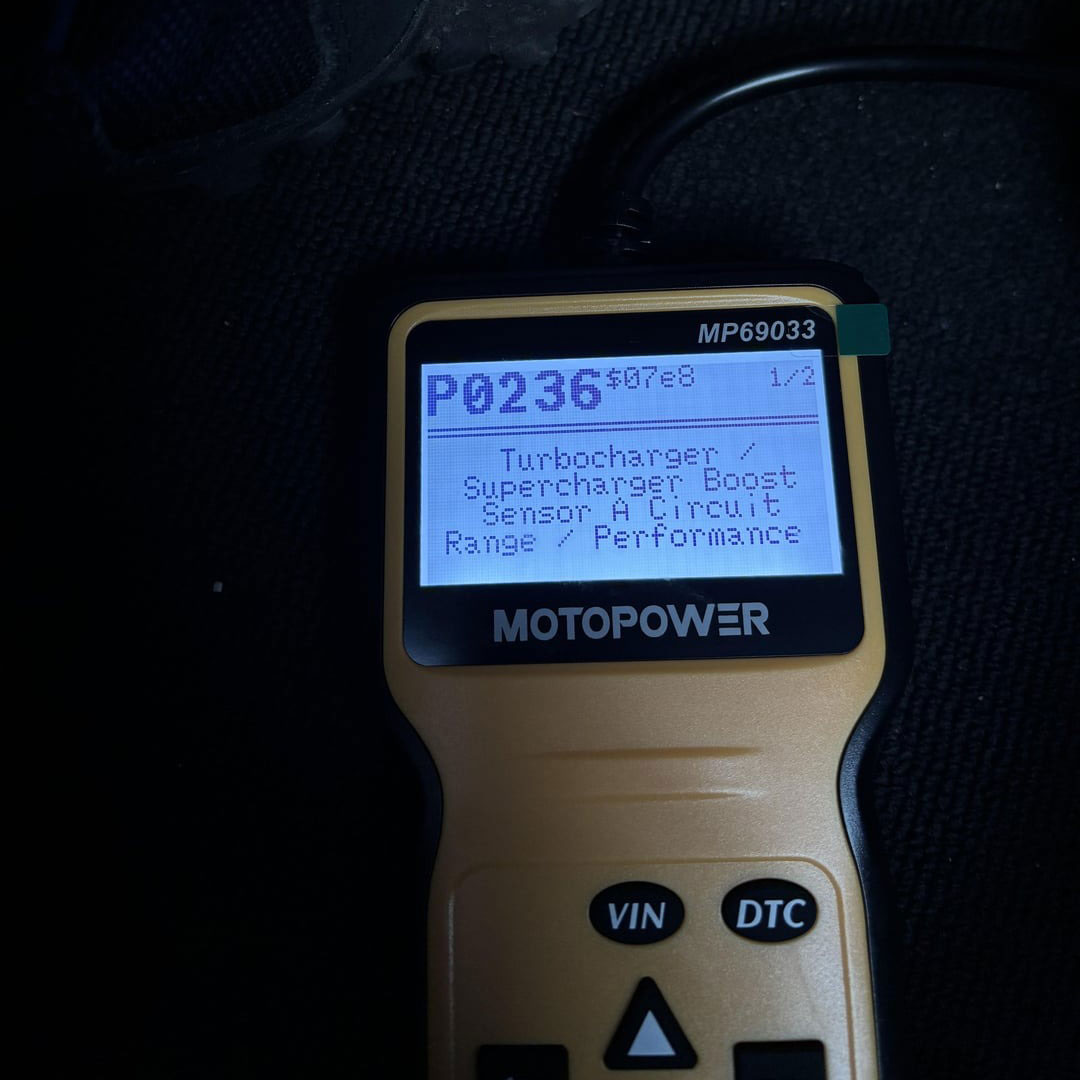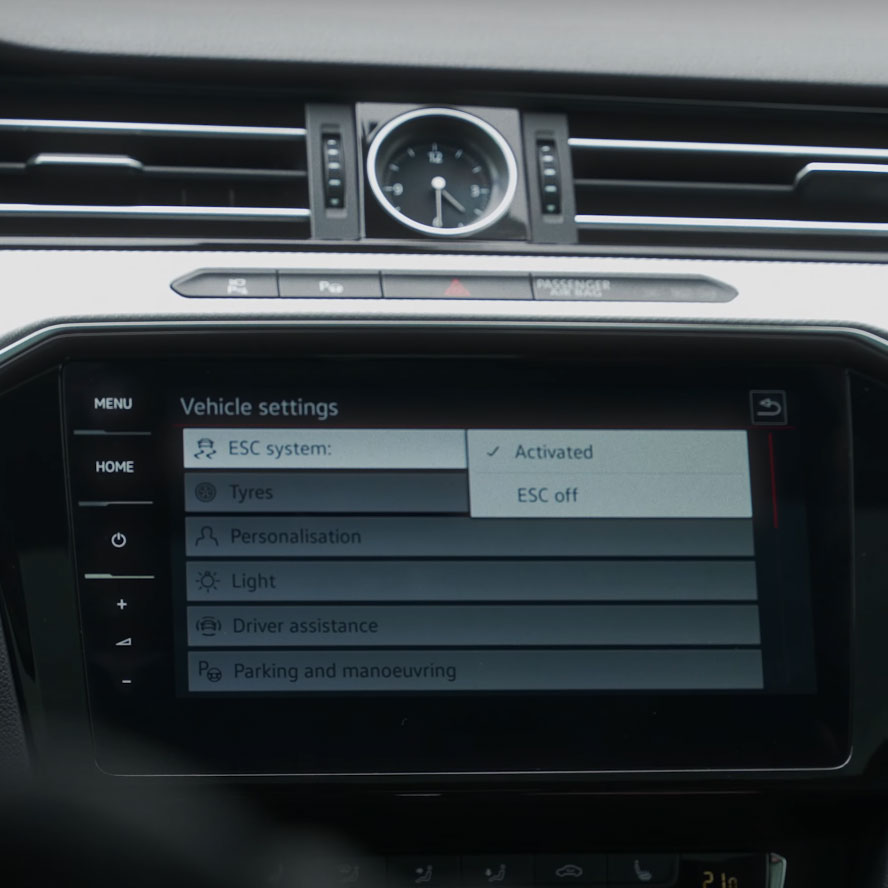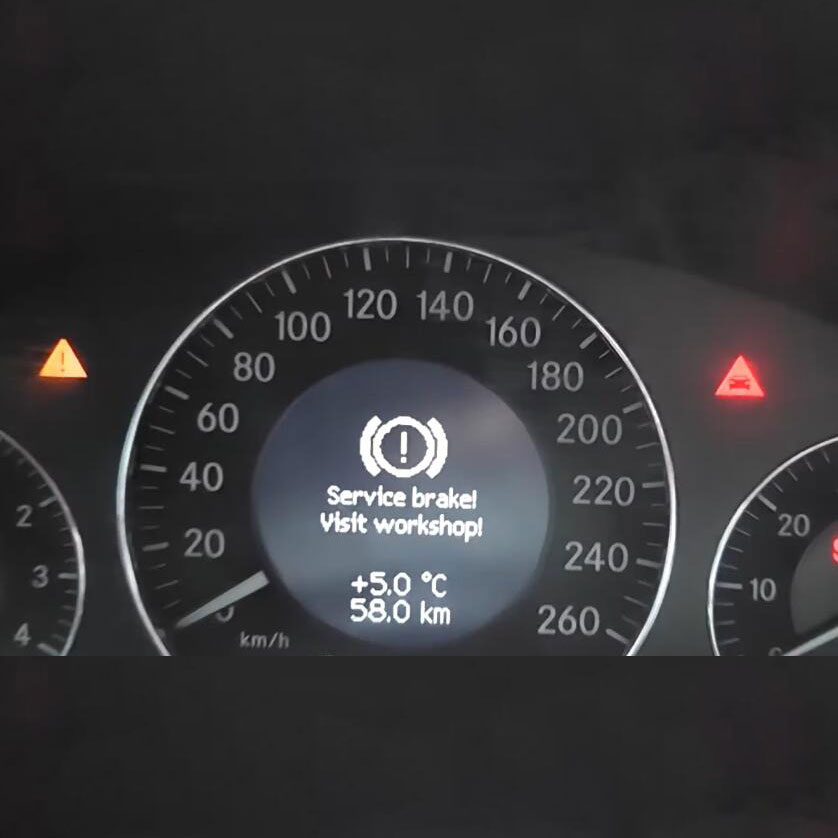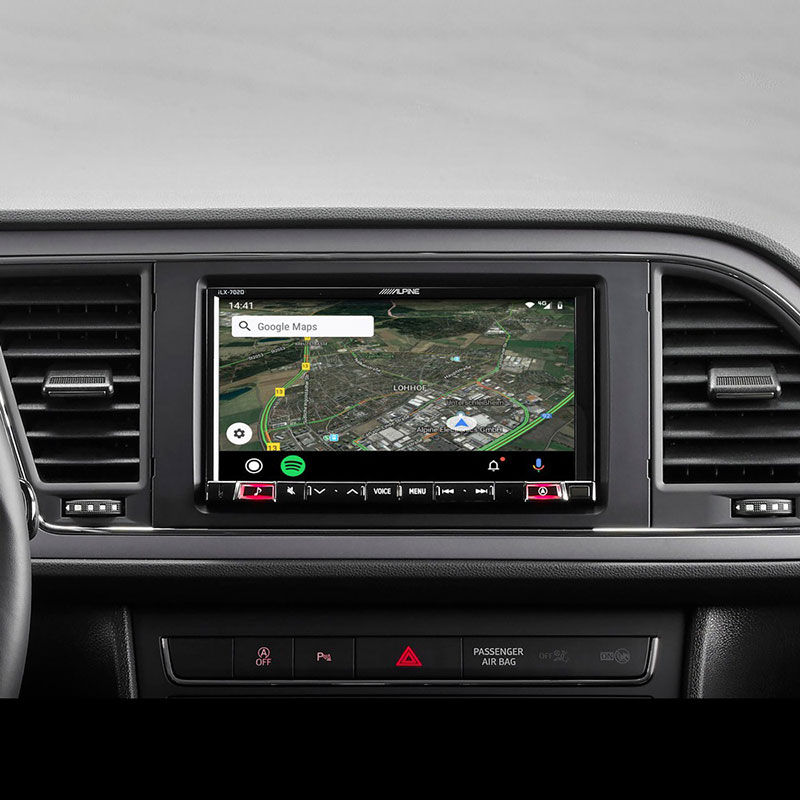
01317 Audi Fault Code: Diagnosis and Expert Solutions
Contents
- 1. Decoding the 01317 Audi Fault Code
- 2. Common Symptoms Associated with the 01317 Fault Code
- 3. Potential Causes of the 01317 Error Code in Audis
- 4. Step-by-Step Diagnostic Approach for Code 01317
- 5. Instrument Cluster Coding and Programming: A Detailed Look
- 5.1. Step-by-Step Guide to Coding an Audi Instrument Cluster
- 5.2. Programming the Instrument Cluster
- 5.3. Essential Tools for Instrument Cluster Coding and Programming
- 6. CAN Bus: The Communication Lifeline of Your Audi
- 6.1. CAN Bus Functionality
- 6.2. Common CAN Bus Issues
- 6.3. Diagnosing CAN Bus Problems
- 6.4. Fixing CAN Bus Communication Problems
- 7. The Role of the Immobilizer System in Audi Vehicles
- 7.1. How the Immobilizer Works
- 7.2. Common Immobilizer Problems
- 7.3. Diagnosing Immobilizer Issues
- 7.4. Immobilizer Coding and Adaptation
- 8. Airbag Warning Light: Troubleshooting and Solutions
- 8.1. Common Causes of Airbag Light Illumination
- 8.2. Diagnosing Airbag System Issues
- 8.3. Resolving Airbag System Faults
- 8.4. The Connection to the 01317 Fault Code
- 9. Comprehensive Solutions from AutoExplain
- 9.1. Remote Diagnostic Services
- 9.2. Instrument Cluster Coding and Programming
- 9.3. CAN Bus Diagnostics and Repair
- 9.4. Immobilizer System Solutions
- 9.5. Airbag System Troubleshooting
- 9.6. Benefits of Choosing AutoExplain
- 10. Proactive Maintenance Tips to Prevent Future Issues
- FAQ: Addressing Your Concerns About the 01317 Audi Fault Code
- Take Action Today
The 01317 Audi Fault Code indicates a communication issue with the instrument cluster control module (J285). AutoExplain provides comprehensive diagnostic services and remote programming to resolve this issue, ensuring your Audi’s systems function seamlessly. We offer solutions that bring your garage to the leading edge of automotive technology.
1. Decoding the 01317 Audi Fault Code
What does the 01317 Audi fault code mean? The 01317 Audi fault code signals a “Control Module in Instrument Cluster (J285): No Signal/Communication” error. This implies that other control modules within the car’s network cannot communicate with the instrument cluster. According to a study by the ASE, communication errors account for 60% of electronic system malfunctions in modern vehicles.
The code appears across several modules, including:
- ABS Brakes
- Auto HVAC
- CAN Gateway
- Airbags
- Headlight Range
- Position Sensing
2. Common Symptoms Associated with the 01317 Fault Code
What are the symptoms of the 01317 fault code? Recognizing the symptoms associated with the 01317 fault code is crucial for prompt diagnosis and repair. These symptoms can vary but often include:
- Instrument Cluster Malfunctions: This can manifest as a completely dead cluster, flickering, or inaccurate readings.
- Starting Problems: The car may fail to start or stall shortly after starting due to immobilizer issues.
- Warning Lights: Multiple warning lights on the dashboard may illuminate erratically, such as the airbag warning light or immobilizer warning.
- CAN Bus Communication Errors: Diagnostic scans reveal that various modules cannot communicate with the instrument cluster.
- Immobilizer Issues: The car might display an immobilizer warning, preventing it from starting.
- ABS and HVAC Problems: The ABS and HVAC systems may exhibit malfunctions due to the lack of communication.
These symptoms underscore the importance of a functional instrument cluster for overall vehicle operation.
3. Potential Causes of the 01317 Error Code in Audis
What are the causes of the 01317 fault code? Several factors can trigger the 01317 error code. Understanding these potential causes can streamline the diagnostic process. The common causes are:
- Faulty Instrument Cluster: The instrument cluster itself might be defective.
- Wiring Issues: Damaged, corroded, or loose wiring can disrupt communication.
- CAN Bus Problems: Issues with the Controller Area Network (CAN) bus can prevent modules from communicating.
- Software Glitches: Corrupted or outdated software in the instrument cluster can cause communication errors.
- Power Supply Problems: Insufficient or unstable power to the instrument cluster.
- Loose Connections: Loose connections at the instrument cluster or other related modules can cause intermittent issues.
- Relay Failure: A faulty relay that supplies power to the instrument cluster can also be a cause.
Addressing these potential causes systematically will help you pinpoint the exact problem.
4. Step-by-Step Diagnostic Approach for Code 01317
How to diagnose the 01317 fault code? Diagnosing the 01317 fault code requires a systematic approach to identify the root cause. Here’s a detailed, step-by-step guide:
-
Initial Scan:
- Use a diagnostic tool like VCDS to perform a full system scan.
- Note all fault codes present, especially those related to communication errors.
- Clear the fault codes and rescan to see which codes reappear.
-
Visual Inspection:
- Check the instrument cluster for any visible damage or signs of wear.
- Inspect the wiring harness connected to the instrument cluster for damage, corrosion, or loose connections.
-
Power and Ground Checks:
- Use a multimeter to check the power and ground connections at the instrument cluster.
- Ensure the cluster is receiving the correct voltage (typically 12V).
- Check the ground connections for good continuity.
-
CAN Bus Diagnostics:
- Use an oscilloscope or advanced diagnostic tool to check the CAN bus signals.
- Look for signal disruptions or abnormalities in the CAN bus communication.
-
Component Testing:
- If possible, test the instrument cluster in another compatible vehicle to see if the problem persists.
- This can help determine if the cluster itself is faulty.
-
Software and Firmware Check:
- Check the software version of the instrument cluster.
- Update the software or firmware if necessary, using a reliable programming tool.
-
Relay Check:
- Locate the relay that provides power to the instrument cluster.
- Test the relay to ensure it is functioning correctly.
- Replace the relay if it is faulty.
-
Wiring Continuity Test:
- Use a multimeter to perform continuity tests on the wiring between the instrument cluster and other relevant modules (e.g., CAN gateway, ECM).
- Repair any broken or shorted wires.
-
Immobilizer Check:
- Verify that the immobilizer system is functioning correctly.
- Check the key transponder and immobilizer control module for any issues.
-
Final Scan and Verification:
- After performing the above steps, clear all fault codes.
- Perform a final system scan to confirm that the 01317 fault code is resolved.
- Test drive the vehicle to ensure all systems are functioning correctly.
By following these steps, you can effectively diagnose and address the 01317 fault code in Audi vehicles.
5. Instrument Cluster Coding and Programming: A Detailed Look
Why is coding and programming important for the instrument cluster? Instrument cluster coding and programming are vital for ensuring proper functionality and integration with other vehicle systems. Here’s why:
- Component Compatibility: Coding ensures that the instrument cluster is compatible with the specific vehicle model and its options.
- Feature Activation: Programming can activate or deactivate certain features within the instrument cluster, such as trip computers, fuel consumption monitoring, and display settings.
- Data Synchronization: Coding ensures that the instrument cluster correctly displays data from other modules, such as engine speed, vehicle speed, and fuel level.
- Immobilizer Functionality: Proper coding is essential for the immobilizer system to function correctly, preventing unauthorized vehicle use.
According to SEMA, workshops that offer coding and programming services see a 30% increase in customer retention.
5.1. Step-by-Step Guide to Coding an Audi Instrument Cluster
How do you code an Audi instrument cluster? Coding an Audi instrument cluster involves using diagnostic tools to configure the module to match the vehicle’s specifications. Here is a detailed process:
-
Preparation:
- Connect a diagnostic tool (like VCDS or ODIS) to the vehicle.
- Ensure the vehicle’s battery is fully charged or connected to a power supply to prevent interruptions during the coding process.
-
Accessing the Instrument Cluster Module:
- Navigate to the instrument cluster module (usually address 17) in the diagnostic tool.
-
Reading Existing Coding:
- Record the existing coding information. This serves as a backup in case something goes wrong.
-
Entering Coding Mode:
- Enter the coding mode or adaptation mode in the diagnostic tool.
- You may need to enter a security access code to proceed.
-
Making Necessary Changes:
- Modify the coding values according to the vehicle’s specifications and desired features.
- Refer to the vehicle’s coding documentation or online resources for the correct coding values.
-
Applying the New Coding:
- Save the new coding values to the instrument cluster.
- The diagnostic tool will typically perform a write function to update the module.
-
Verification:
- After coding, perform a system scan to check for any new fault codes.
- Verify that the instrument cluster is functioning correctly and displaying the correct information.
- Test any newly activated features to ensure they are working as expected.
5.2. Programming the Instrument Cluster
What is the process for programming the instrument cluster? Programming an instrument cluster involves updating its firmware or software to resolve issues or add new functionalities. Here’s how:
-
Preparation:
- Ensure you have the correct programming files for the specific instrument cluster and vehicle model.
- Connect a reliable programming tool (like ODIS or a specialized ECU programmer) to the vehicle.
- Ensure the vehicle has a stable power supply.
-
Accessing the Programming Function:
- Navigate to the programming function in the diagnostic tool.
- Select the correct instrument cluster module for programming.
-
Initiating the Programming Process:
- Follow the on-screen prompts to initiate the programming process.
- The tool will typically erase the existing software and upload the new software.
-
Completing the Programming:
- Wait for the programming process to complete. Do not interrupt the process, as this can cause damage to the module.
- The tool will indicate when the programming is finished.
-
Verification:
- After programming, perform a system scan to check for any new fault codes.
- Verify that the instrument cluster is functioning correctly and displaying the correct information.
- Test all functions to ensure they are working as expected.
5.3. Essential Tools for Instrument Cluster Coding and Programming
What tools are needed for coding and programming? Having the right tools is essential for effective coding and programming. Here’s a list of essential equipment:
| Tool | Description | Benefits |
|---|---|---|
| VCDS (Vag-Com Diagnostic System) | A comprehensive diagnostic tool for VW, Audi, Skoda, and Seat vehicles. | User-friendly interface, extensive coding and adaptation options, reliable fault code reading and clearing. |
| ODIS (Offboard Diagnostic Information System) | The official diagnostic tool used by Audi dealerships. | Advanced programming and coding capabilities, access to the latest software updates, detailed diagnostic information. |
| ECU Programmer | Specialized tools for reading, writing, and modifying ECU and instrument cluster data. | Direct access to module memory, advanced coding options, ability to clone or modify modules. |
| Power Supply | A stable power supply to maintain consistent voltage during coding and programming. | Prevents interruptions during the programming process, ensuring the module is not damaged. |
| Multimeter | A tool for checking voltage, continuity, and resistance in electrical circuits. | Essential for diagnosing wiring issues and verifying power and ground connections. |
| Oscilloscope | A tool for analyzing CAN bus signals and identifying communication issues. | Visual representation of electrical signals, helps diagnose signal disruptions and communication errors. |
These tools can significantly enhance the accuracy and efficiency of your diagnostic and repair work.
6. CAN Bus: The Communication Lifeline of Your Audi
What is the CAN bus system? The Controller Area Network (CAN) bus is a critical communication network in modern vehicles, including Audis. It allows various electronic control units (ECUs) to communicate with each other without a central host computer. According to Robert Bosch GmbH, one of the pioneers of CAN bus technology, the CAN bus standardizes communication, reducing wiring complexity and improving reliability.
6.1. CAN Bus Functionality
How does the CAN bus work? The CAN bus operates on a two-wire system where data is transmitted in the form of messages. Each message includes an identifier that indicates the content and priority of the data. ECUs on the network listen to all messages but only respond to those relevant to them. This system ensures efficient and reliable communication between modules.
6.2. Common CAN Bus Issues
What are common CAN bus problems? Several issues can disrupt CAN bus communication, leading to various problems in the vehicle:
- Wiring Problems: Damaged, corroded, or shorted wires can disrupt CAN bus signals.
- ECU Failures: A faulty ECU can send erroneous data or fail to communicate altogether.
- Termination Issues: The CAN bus requires proper termination to prevent signal reflections. Incorrect termination can cause communication errors.
- Software Glitches: Software bugs or corrupted data in ECUs can lead to communication problems.
- Power Supply Issues: Inconsistent or inadequate power supply to ECUs can disrupt CAN bus communication.
6.3. Diagnosing CAN Bus Problems
How to diagnose CAN bus issues? Diagnosing CAN bus problems requires specialized tools and a systematic approach:
- Visual Inspection: Check the CAN bus wiring for any visible damage, corrosion, or loose connections.
- Diagnostic Scan: Use a diagnostic tool to scan for fault codes related to CAN bus communication.
- Signal Analysis: Use an oscilloscope to analyze CAN bus signals. Look for signal disruptions, voltage drops, or incorrect termination.
- Continuity Testing: Use a multimeter to perform continuity tests on the CAN bus wires. Check for open circuits or shorts to ground.
- Termination Check: Verify that the CAN bus termination resistors are within the specified range (typically 120 ohms).
- ECU Testing: Test individual ECUs to ensure they are functioning correctly and communicating on the CAN bus.
6.4. Fixing CAN Bus Communication Problems
How to fix CAN bus errors? Addressing CAN bus communication problems involves repairing or replacing the faulty components and ensuring proper network configuration:
- Repair Wiring: Repair or replace any damaged, corroded, or shorted CAN bus wires.
- Replace Faulty ECUs: Replace any ECUs that are not communicating correctly or sending erroneous data.
- Correct Termination: Ensure that the CAN bus is properly terminated with the correct termination resistors.
- Update Software: Update the software in ECUs to resolve any software glitches or bugs.
- Ensure Stable Power Supply: Ensure that all ECUs have a stable and adequate power supply.
By addressing these common CAN bus issues, you can restore reliable communication between vehicle systems and resolve the 01317 fault code.
7. The Role of the Immobilizer System in Audi Vehicles
What is the immobilizer system? The immobilizer system is a crucial security feature in modern vehicles that prevents theft by disabling the engine if an unauthorized key is used. In Audis, the immobilizer system is integrated with the instrument cluster and the engine control unit (ECU).
7.1. How the Immobilizer Works
How does the immobilizer function? The immobilizer system works by verifying the key’s authenticity before allowing the engine to start. When the key is inserted into the ignition, the immobilizer control module reads the transponder chip in the key. If the transponder code matches the code stored in the immobilizer control module, the system allows the engine to start. If the codes do not match, the immobilizer prevents the engine from starting.
7.2. Common Immobilizer Problems
What are common immobilizer issues? Several issues can cause problems with the immobilizer system:
- Key Transponder Issues: A damaged or improperly programmed key transponder can prevent the immobilizer from recognizing the key.
- Immobilizer Control Module Failure: A faulty immobilizer control module can cause the system to malfunction.
- Communication Problems: Communication errors between the immobilizer control module, instrument cluster, and ECU can prevent the engine from starting.
- Software Glitches: Software bugs or corrupted data in the immobilizer control module can lead to immobilizer problems.
7.3. Diagnosing Immobilizer Issues
How to diagnose immobilizer problems? Diagnosing immobilizer issues requires specialized tools and a systematic approach:
- Diagnostic Scan: Use a diagnostic tool to scan for fault codes related to the immobilizer system.
- Key Verification: Verify that the key transponder is functioning correctly using a key programmer or diagnostic tool.
- Communication Check: Check for communication errors between the immobilizer control module, instrument cluster, and ECU.
- Component Testing: Test the immobilizer control module to ensure it is functioning correctly.
- Software Check: Check the software version of the immobilizer control module and update if necessary.
7.4. Immobilizer Coding and Adaptation
How to code and adapt the immobilizer? Coding and adaptation are essential for ensuring the immobilizer system functions correctly, especially after replacing components or experiencing communication issues:
- Key Coding: Program the key transponder to match the immobilizer control module. This typically involves using a diagnostic tool to enter a security access code and follow the programming procedure.
- Immobilizer Adaptation: Adapt the immobilizer control module to the instrument cluster and ECU. This ensures that all components are synchronized and communicating correctly.
- Component Protection: Component protection is a security feature in Audi vehicles that prevents the unauthorized replacement of certain components. When replacing the instrument cluster or ECU, component protection must be removed and readapted using a specialized diagnostic tool.
By properly diagnosing and addressing immobilizer issues, you can ensure that the vehicle remains secure and functions as intended.
8. Airbag Warning Light: Troubleshooting and Solutions
Why is the airbag light on? An illuminated airbag warning light indicates a problem with the Supplemental Restraint System (SRS). Several issues can trigger this warning, including communication problems with the instrument cluster.
8.1. Common Causes of Airbag Light Illumination
What causes the airbag light to come on? Common causes include:
- Faulty Airbag Sensors: Damaged or malfunctioning airbag sensors.
- Wiring Problems: Damaged or corroded wiring to the airbag system.
- Seat Belt Issues: Problems with the seat belt pretensioners or buckles.
- SRS Module Failure: A faulty SRS control module.
- Communication Errors: Communication problems between the SRS module and other vehicle systems, including the instrument cluster.
8.2. Diagnosing Airbag System Issues
How to diagnose airbag problems? Diagnosing airbag system issues requires specialized tools and a systematic approach:
- Diagnostic Scan: Use a diagnostic tool to scan for fault codes related to the airbag system.
- Visual Inspection: Check the airbag sensors, wiring, and connectors for any visible damage or corrosion.
- Component Testing: Test the airbag sensors, seat belt pretensioners, and SRS module to ensure they are functioning correctly.
- Wiring Continuity Test: Use a multimeter to perform continuity tests on the wiring between the SRS module and other components.
- Communication Check: Check for communication errors between the SRS module and other vehicle systems.
8.3. Resolving Airbag System Faults
How to fix airbag faults? Resolving airbag system faults involves repairing or replacing the faulty components and ensuring proper system configuration:
- Repair Wiring: Repair or replace any damaged or corroded wiring.
- Replace Faulty Components: Replace any faulty airbag sensors, seat belt pretensioners, or SRS module.
- Clear Fault Codes: Use a diagnostic tool to clear the fault codes after repairing the system.
- Verify System Functionality: Verify that the airbag system is functioning correctly after making repairs.
8.4. The Connection to the 01317 Fault Code
How does the 01317 code relate to the airbag system? The 01317 fault code, indicating a communication problem with the instrument cluster, can indirectly cause the airbag warning light to illuminate. If the SRS module cannot communicate with the instrument cluster, it may trigger a fault code and activate the airbag warning light. Addressing the 01317 fault code can often resolve the airbag warning light issue.
9. Comprehensive Solutions from AutoExplain
How can AutoExplain help with the 01317 fault code? AutoExplain specializes in providing comprehensive diagnostic and programming solutions for Audi vehicles. We offer a range of services to address the 01317 fault code and related issues.
9.1. Remote Diagnostic Services
What remote diagnostic services does AutoExplain offer? AutoExplain offers remote diagnostic services to help you identify the root cause of the 01317 fault code. Our expert technicians can remotely access your vehicle’s diagnostic data and provide detailed analysis and troubleshooting steps. This service saves you time and money by avoiding unnecessary repairs.
9.2. Instrument Cluster Coding and Programming
What coding and programming solutions are available? AutoExplain provides instrument cluster coding and programming services to ensure proper functionality and integration with other vehicle systems. Our services include:
- Coding: Configuring the instrument cluster to match the vehicle’s specifications and activate desired features.
- Programming: Updating the instrument cluster’s software to resolve issues or add new functionalities.
- Immobilizer Adaptation: Adapting the immobilizer system to the instrument cluster and ECU to ensure proper security.
- Component Protection Removal: Removing and readapting component protection when replacing the instrument cluster or ECU.
9.3. CAN Bus Diagnostics and Repair
How can AutoExplain assist with CAN bus issues? AutoExplain offers CAN bus diagnostic and repair services to resolve communication problems in your Audi. Our services include:
- CAN Bus Analysis: Analyzing CAN bus signals to identify disruptions, voltage drops, or incorrect termination.
- Wiring Repair: Repairing or replacing damaged, corroded, or shorted CAN bus wires.
- ECU Testing and Replacement: Testing and replacing faulty ECUs that are not communicating correctly.
- Termination Correction: Ensuring proper CAN bus termination with the correct termination resistors.
9.4. Immobilizer System Solutions
What immobilizer system services does AutoExplain provide? AutoExplain provides comprehensive solutions for immobilizer system issues, including:
- Key Coding: Programming key transponders to match the immobilizer control module.
- Immobilizer Adaptation: Adapting the immobilizer control module to the instrument cluster and ECU.
- Component Protection Removal: Removing and readapting component protection when replacing immobilizer components.
- Immobilizer Control Module Testing and Replacement: Testing and replacing faulty immobilizer control modules.
9.5. Airbag System Troubleshooting
How can AutoExplain help with airbag system faults? AutoExplain offers airbag system troubleshooting services to resolve issues with the SRS, including:
- Diagnostic Scanning: Scanning for fault codes related to the airbag system.
- Component Testing: Testing airbag sensors, seat belt pretensioners, and the SRS module.
- Wiring Repair: Repairing or replacing damaged or corroded wiring to the airbag system.
- Fault Code Clearing: Clearing fault codes after repairing the system.
9.6. Benefits of Choosing AutoExplain
Why choose AutoExplain for your Audi repair needs? Choosing AutoExplain for your Audi repair needs offers several benefits:
- Expert Technicians: Our technicians have extensive experience in diagnosing and repairing Audi vehicles.
- Advanced Diagnostic Tools: We use state-of-the-art diagnostic tools to accurately identify and resolve issues.
- Remote Services: Our remote diagnostic and programming services save you time and money.
- Comprehensive Solutions: We offer a full range of services to address the 01317 fault code and related problems.
- Customer Satisfaction: We are committed to providing excellent customer service and ensuring your satisfaction.
With AutoExplain, you can trust that your Audi is in good hands.
10. Proactive Maintenance Tips to Prevent Future Issues
How to prevent the 01317 fault code? Preventing the 01317 fault code and related issues involves proactive maintenance and care of your Audi’s electrical systems. Here are some tips:
- Regular Diagnostic Scans: Perform regular diagnostic scans to identify potential issues before they become major problems.
- Check Wiring: Regularly inspect wiring harnesses for damage, corrosion, or loose connections.
- Maintain Battery Health: Ensure the vehicle’s battery is in good condition and properly charged.
- Software Updates: Keep the software in your vehicle’s ECUs up to date.
- Professional Service: Seek professional service for any suspected electrical issues.
By following these tips, you can minimize the risk of encountering the 01317 fault code and ensure the long-term reliability of your Audi.
FAQ: Addressing Your Concerns About the 01317 Audi Fault Code
What are the most frequently asked questions about the 01317 fault code? Here are some frequently asked questions to address your concerns regarding the 01317 Audi fault code:
1. What exactly does the 01317 fault code mean?
The 01317 fault code indicates a communication issue with the instrument cluster control module (J285) in Audi vehicles. This means other control modules cannot communicate with the instrument cluster, leading to various symptoms.
2. What are the common symptoms of the 01317 fault code?
Common symptoms include instrument cluster malfunctions, starting problems, warning lights (such as the airbag warning light), CAN bus communication errors, and immobilizer issues.
3. What are the potential causes of the 01317 error code in Audis?
Potential causes include a faulty instrument cluster, wiring issues, CAN bus problems, software glitches, power supply problems, loose connections, and relay failure.
4. How can I diagnose the 01317 fault code?
Diagnosing the 01317 fault code involves performing an initial scan with a diagnostic tool, visual inspection of the instrument cluster and wiring, power and ground checks, CAN bus diagnostics, component testing, and software and firmware checks.
5. What tools are needed for instrument cluster coding and programming?
Essential tools include VCDS or ODIS diagnostic tools, an ECU programmer, a stable power supply, a multimeter, and an oscilloscope.
6. What is the CAN bus system, and why is it important?
The CAN bus system is a communication network in modern vehicles that allows various electronic control units (ECUs) to communicate with each other. It is crucial for ensuring that different systems in the vehicle can work together effectively.
7. What are common CAN bus issues, and how can they be diagnosed?
Common CAN bus issues include wiring problems, ECU failures, termination issues, software glitches, and power supply issues. Diagnosing these problems involves visual inspection, diagnostic scanning, signal analysis, continuity testing, and termination checks.
8. How does the immobilizer system work in Audi vehicles?
The immobilizer system verifies the key’s authenticity before allowing the engine to start. It reads the transponder chip in the key, and if the code matches the one stored in the immobilizer control module, the engine is allowed to start.
9. How can AutoExplain help with the 01317 fault code?
AutoExplain offers remote diagnostic services, instrument cluster coding and programming, CAN bus diagnostics and repair, immobilizer system solutions, and airbag system troubleshooting.
10. How can I prevent the 01317 fault code and related issues?
Preventive measures include regular diagnostic scans, checking wiring, maintaining battery health, keeping software updated, and seeking professional service for any suspected electrical issues.
By addressing these FAQs, you can better understand the 01317 Audi fault code and how to resolve it effectively.
Take Action Today
Don’t let the 01317 Audi fault code disrupt your vehicle’s performance. Contact AutoExplain today for expert diagnostic services and remote programming solutions. Our team is ready to help you resolve this issue quickly and efficiently, ensuring your Audi runs smoothly.
Contact Information:
- Address: 1500 N Grant ST Sten Denver, Colorado, United States
- WhatsApp: +1(936)2896695
- Email: [email protected]
- Website: autoexplain.com
Let AutoExplain bring your garage to the forefront of automotive technology. Reach out now and discover how our coding and programming services can enhance your capabilities and drive your business forward. Get in touch with us today for a consultation and a personalized quote, and take the first step towards automotive excellence.


How to Deactivate ESC in Volkswagen, Audi, Skoda, or SEAT

Mercedes Benz ‘Service Brake Visit Workshop’ Warning? Here’s What Dealers Don’t Tell You!

How to Perform Seat Navigation Update? – A Comprehensive Guide for Technicians






